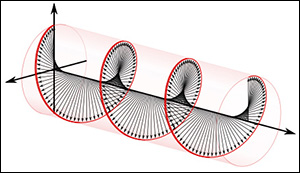Super-antenna could let Mars rover talk directly with Earth
16. 9. 2015 | ExtremeTech | www.extremetech.com
Right now, Mars rovers like Curiosity get roughly 15 minutes to talk to scientists back on Earth, twice per day. If a scientist wants to issue a complex set of orders, or download a whole bunch of new information, it has to all fit into these 15-minute windows.
For scientists on the ground, the necessity of bouncing signals through multiple orbiting satellites means that rover missions progress as a series of quick snapshots, with tense waits in between. Now, they have a prototype for a new and improved type of rover antenna, one that could turn those minutes into hours, and those orbiters into space junk.

The idea comes from a group working on advanced antenna technology at UCLA, in combination with NASA’s Jet Propulsion laboratory. The idea is basically to use an array of 256 antenna elements (a 16 x 16 square) all working together to make a “super-antenna” capable of directly communicating with Earth. Having fewer moving bodies to worry about keeping in alignment, this system could give a rover up to several hours of communication time with operators back on Earth, every day.
The reason it works is not just that the array of mini-antennas creates a more powerful signal, but that the signal is circularly polarized. This has the effect of keeping the signal coherent as it travels through the Martian atmosphere - once a signal gets into the vacuum of space with good signal strength intact, getting the rest of the way to an orbiter around the Earth isn’t hard at all.
Read more at ExtremeTech
Image Credit: Wikipedia
-jk-




